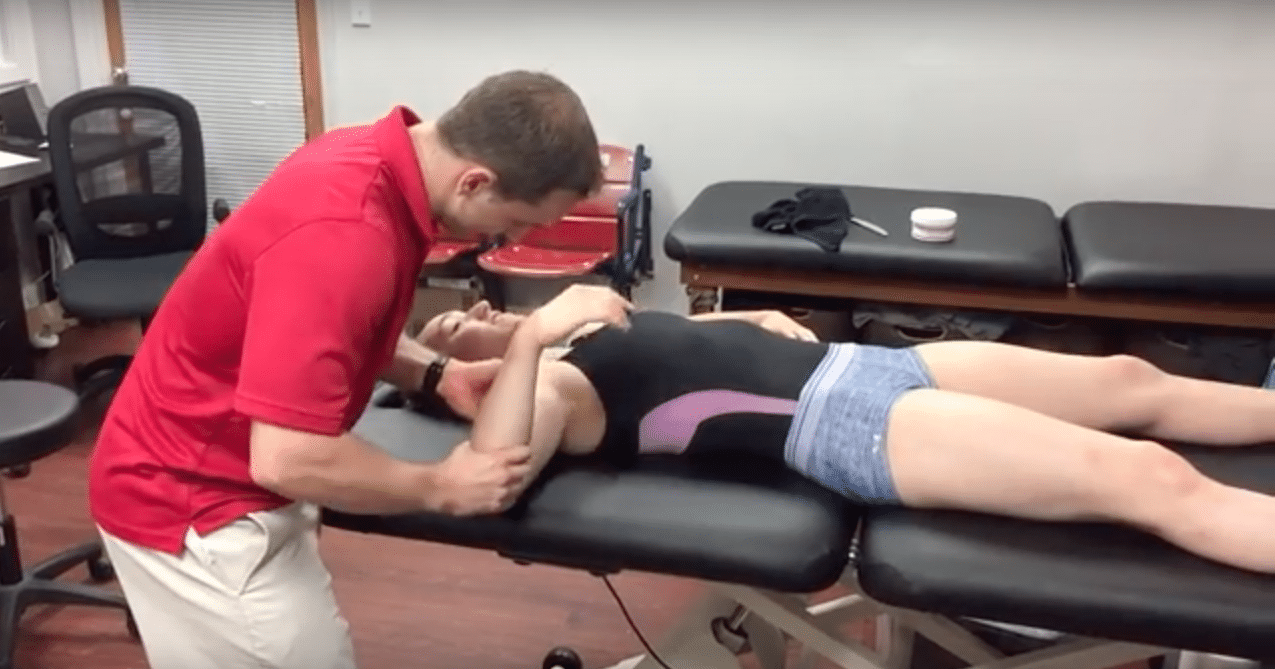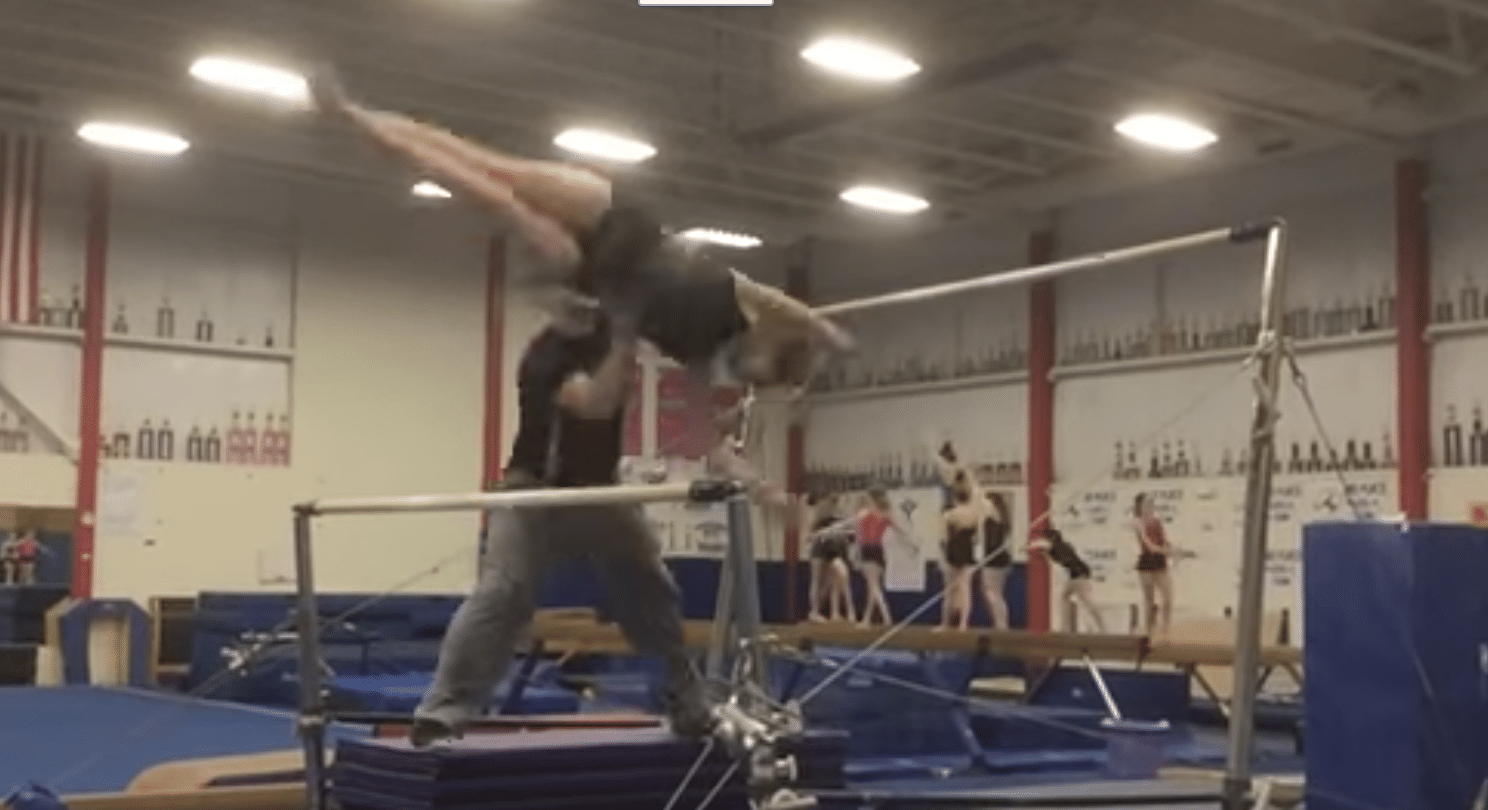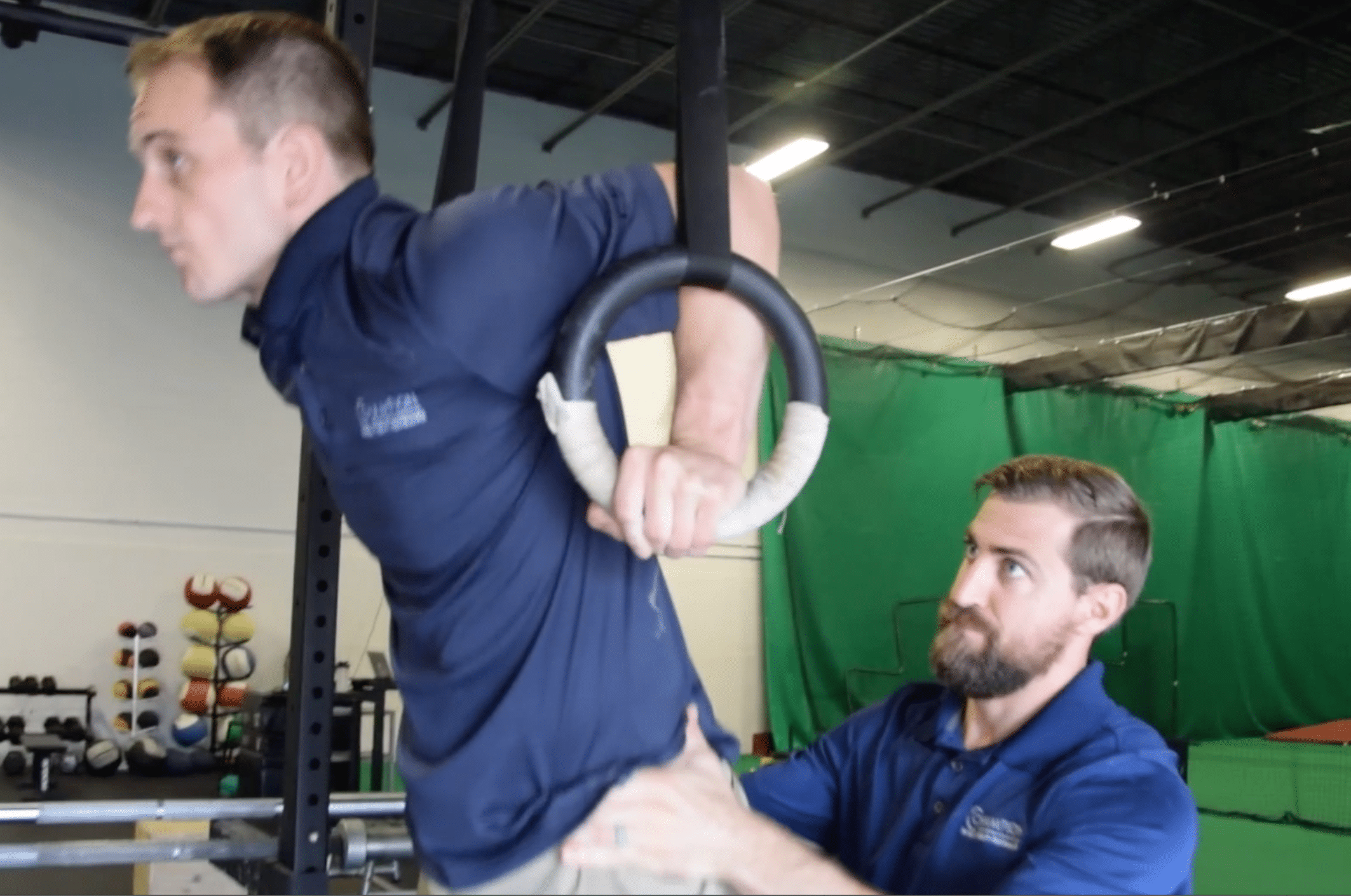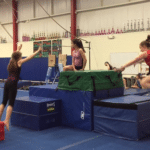High Level Gymnast With Shoulder Pain During Releases and Chronic Wrist Pain: From Clinic To Practice #5
It’s been a while since I did another case study “From Clinic To Practice” type post. I wanted to get back to them, as readers send me a lot of positive feedback when I write them. During the middle of the season, I had a level 10 gymnast come to me with a lot of chronic right shoulder pain and also right wrist pain. This pattern of injury is extremely common for many gymnasts who come see me at Champion, and I think it traces back to some important concepts around the shoulder stretching methods we are using, combined with the commonly overlooked importance of rotator cuff / scapula strength in gymnastics. Here are some details.
She was a 17 year old very naturally hyper mobile person (Beighton 9/9), and she told me her right shoulder started to become very painful when she caught overshoot handstands, Geingers and sometimes on Yurchenko’s. She said she also had a lot of right sided wrist pain throughout her last few years of optionals, coming up with any handstand skill, Yurchenko’s, and tumbling. It was getting to the point sometimes where she couldn’t move her wrist and was forced out of training. Both her parents and her were kind enough to allow me to share her case. After going through a full subjective and objective movement assessment, and about a month of a program, here were the highlights that got her back to training with much less pain for nationals.
Table of Contents
1: Limited Overhead Mobility
Despite being a very hyper mobile individual, she had missing overhead motion. This was only caught by doing a specific screen and making sure we looked at all degrees of shoulder motion. When she was in an internally rotated position overhead (back giant swing) she appeared to have motion, but when externally rotating (front giant position or beam BHS) and checking her soft tissue the motion was notably limited.
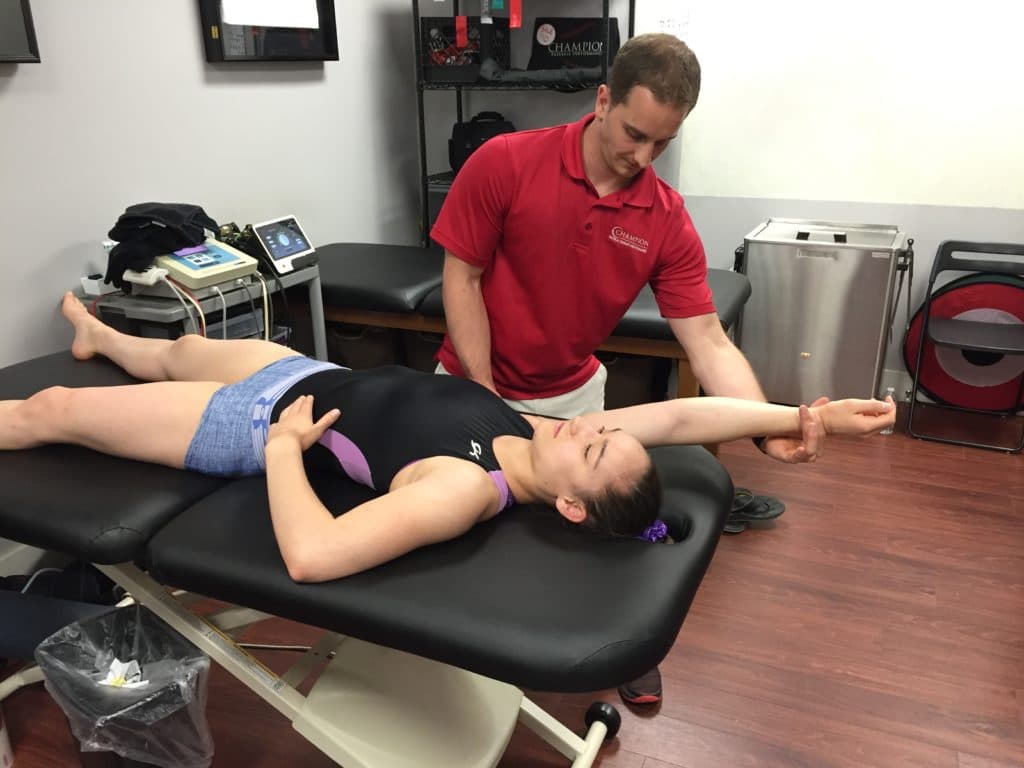
Internally Rotated Overhead Elevation (Not Limited)
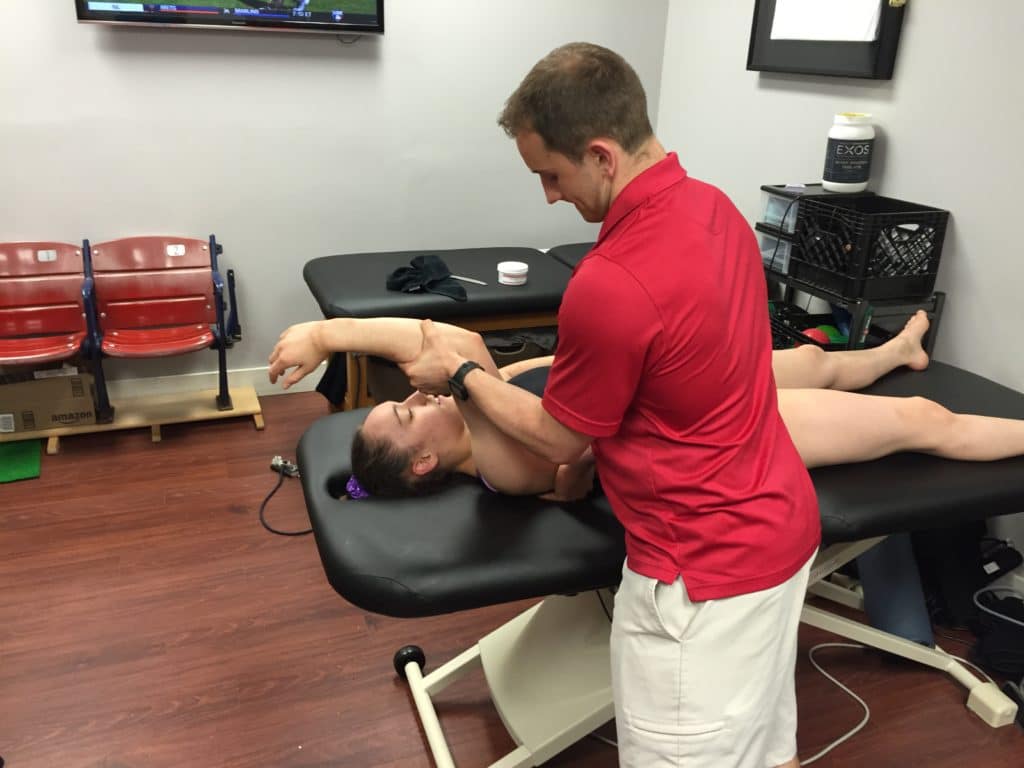
Externally Rotated Elevation (Limited)
This is important in relation to her ability to get into fully overhead handstand positions needed for catching releases. She has likely been jamming her shoulder forcefully into a range she doesn’t have, creating shoulder irritation. Along with this, the lacking overhead shoulder mobility was likely causing her wrist to hyper extend to make up the difference during any handstand type skills. This study in ISJPT suggested this theory, and it is something I see weekly. Both for her wrist and shoulder pain, we had to get to the bottom of why she was missing overhead elevation. It is worth noting, she also did have limited true forearm wrist mobility, likely from years of gripping / impact and her forearms being stiff

Limited Forearm Extension/Supination Flexibility
2: Notable Anterior and Inferior Capsular Laxity
Given her limited motion above, what was concerning to me was to find that she had a huge amount of capsular motion when I looked at her shoulder. For non medical people, it means that I could essentially slide her shoulder far out of the joint, due to her ligaments and supporting passive shoulder tissue being hypermobile. You can see this large amount of translation in this assessment video
This is problematic as excessive laxity without good muscular support can cause the shoulder to slide out during high force skills like overshoots, catching releases, and more. This is a very common problem I see, as I think gymnastics may not have the best assessment skills and flexibility methods during training. This gymnast clearly showed a lack of soft tissue mobility in her lats, pec minor, and teres major. Unfortunately, the stretches she was doing included hands up on a beam with her palms together pushing down like this.
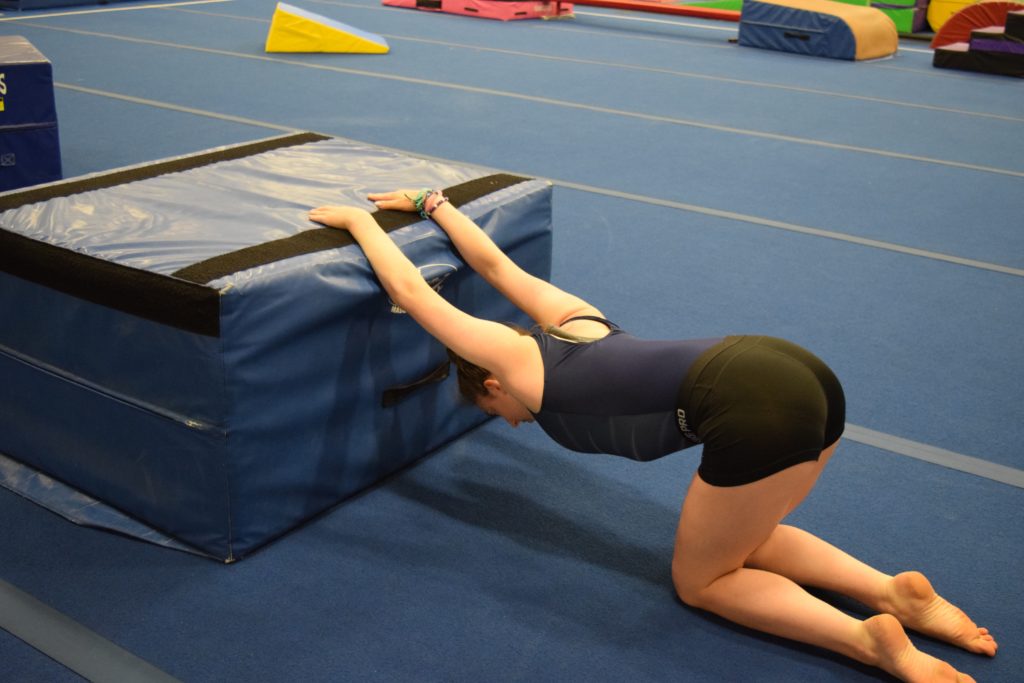
She was also having someone pull up her arms while she laid on the floor in the same fashion. Both of these stretches essentially put the lats and teres on slack , and in turn tend to put a ton of stress on the shoulder joint and joint capsule itself. We definitely don’t want more laxity in these passive stabilizers (ligaments, capsule), as it can spiral into shoulder pain and shoulder instability over the years. I think this is one major reason why her shoulder as so lax as seen in the video above. She has been stretching her already naturally hypermobile capsule out even more her entire life.
3: Relative Weakness/Imbalance in Rotator Cuff and Scapula Muscles
This athlete certainly should not be labelled as “weak” overall, as she has no problem doing advanced strength like rope climbs, multiple leg lifts, handstand push ups, weighted squats, and so on. Her problem was that she had relative weakness in her posterior rotator cuff (infraspinatus, teres minor), as well as her posterior scap musculature and supraspinatus. The smaller muscles of her rotator cuff were notably weaker on exam, and proportionally not equally balance both in different areas as well as compared to her larger prime mover muscles. This sets the stage for lacking co contraction of her shoulder during high compression (overshoots, Yurchenkos) and traction (catching Geingers).
How We Got Rid of Her Pain
1. Took Away “Traditional” Shoulder Stretches
I think the number one way we made progress with her pain was an “addition by subtraction” type approach. For one, I had her stay away from released for a few weeks, while also no longer doing the beam or floor stretches or partner pulling stretches she had been doing daily. To learn more on this concept, check out this popular article I wrote earlier this year, “Gymnastics, Please Stop Doing These Stretches (Part 2)“. I can’t tell you how many gymnasts come to me and this is the first thing I educate them to stop doing. It traces back to understanding the anatomy and choosing the right exercise for someone based off an assessment.
2. Added Self Soft Tissue Work and More Targeted Stretching
Instead of those stretches, I taught her how to utilize a foam roller and lacrosse ball to work the specific soft tissue we found was limited on examination. This was her lats, teres major, pec, and forearm flexor/pronator tissue. When she came to treatment once a week, I did a lot of manual therapy on her lat, teres, and forearm to help accelerate the process. Here are some videos from other posts to demonstrate this concept.
3. Weekly Rotator Cuff/Scap Strength and Dynamic Stability
The second most important part of her care was getting her on a program to build up high levels of strength and dynamic stability around her shoulder. Given the 2-3x body weight forces gymnasts experience, especially in the naturally hyper mobile athletes within the sport, they must have pristine muscular support and dynamic stability. This means unfortunately doing some dumbbell strength exercises many people view as “boring” or “non functional”. On the contrary, I think these are crucial, and personally program many of them every week for our athletes.
It also entailed a lot of manual strengthening and hands on work with me to help build her neuromuscular control.
.
Concluding Thoughts
Before wrapping up, I wanted to mention that anyone reading this who wants to know more about gymnastics flexibility or strength programs, check out my brand new e-book that was just released “The SHIFT Gymnastics Educational Series: Vol 1”. Within this 230 page book I cover all of my current thoughts on safely maximizing flexibility, advanced core training, preventing lower back pain, training concepts, and more. The feedback so far has been incredible, simply clic below to learn more.
Over the course of coming to see my once a week, following the advice in training to go easy on skills that caused symptoms, and also with dedication to her home program, we saw some great changes in the first 4 weeks. These things went along with a very structured / objective plan for how many releases she was going to do per day and per week once she was feeling better. Fast forward to the end of the year, we were able to get her through to J.O. Nationals where she competed and also solidified a spot to a D1 school next year to compete as a freshman. A big shout out to her coaches who realized the importance of getting an assessment/program and also modifying practice to make it through the whole season.
I was happy to hear she made it through, but unfortunately there are other gymnasts from this year’s season who did not have a great positive result. many of them had a season end early, some required surgery to help tighten up the shoulder as it was causing dislocations. Not to end on a grim note, but I just wanted to highlight the fact that it really matters gymnastics considers the consequences of our flexibility/strength choices. Thats all for now, I hope everyone found this case study helpful. Best of luck!
Dave Tilley, DPT

